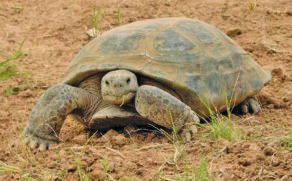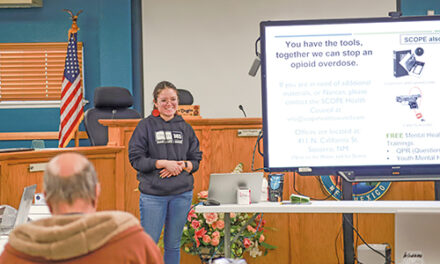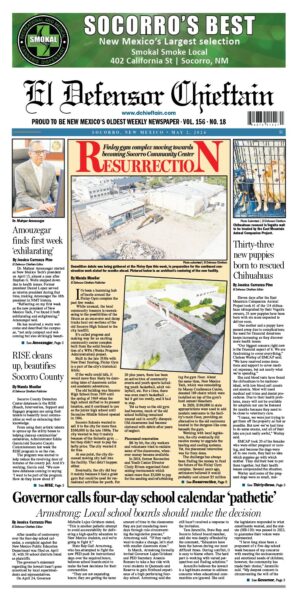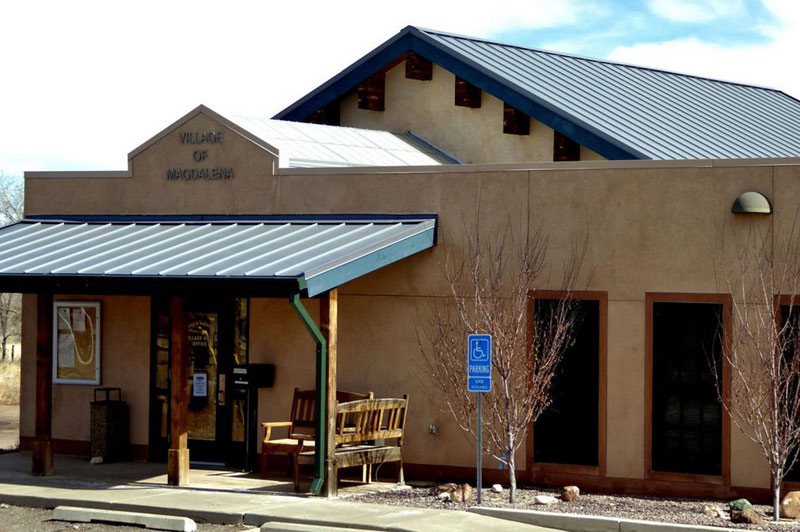
Gertie the Tortoise
A presentation on the Bolson Tortoise project at the Sevilleta National Wildlife Refuge attracted a healthy crowd of more than 230 people on Saturday.
“It was a wonderful turnout, and I was very humbled by so many people being interested in this species that we have been working with for so long,” said Chris Wiese.
Chris Wiese is a senior biologist along with Scott Hillard, and they have the important role of providing the tortoises that will be used in establishing Bolson Tortoises, the largest and rarest tortoises native to North America, at the Sevilleta.
Durning the presentation, Wiese shared the story of Gertie the tortoise.
“I call Gertie the one who started it all,” said Wiese.
Gertie was the first Bolson Tortoise to come up from Mexico and given to Ariel Appleton in Arizona. After Appleton passed away, Gertie made her home at Armendaris Ranch in New Mexico. Wiese’s guess is that Gertie was born sometime between the 1940s and 50s.
“She’s been around since the end of the Second World War and the first atomic bomb at the Trinity site; that puts it into perspective for people,” said Wiese.
And Gertie still makes hatchlings today.
Hillard said that Gertie and her offspring were used for their sequence for the entire genome for the Bolson Tortoise, “so that we could understand their genetics better.”
Still, there are a lot of things that biologists don’t know about this species, such as how long they can live.
In 2006, 30 tortoises, including Gertie, were moved to two locations in New Mexico; 26 to the Armendaris Ranch and four to the Living Desert Zoo and Gardens in Carlsbad. Those thirty

Vance Wolf, lead biologist releasing juvenile tortoises at the Armendaris Ranch.
have now turned into 700 with the help of Wiese, Hillard and supporters of the species.
“The tortoises that will be moved to the Sevilleta will have lived like wild tortoises for some time …the specific tortoises we will be moving to the Sevilleta will be from this group of 700,” said Weise.
She said that they collect the eggs, hatch them, keep them in covered enclosures until they are big enough that they can move to larger semi-captive spaces. The larger areas are outdoors and allow them to live as close to wild, as possible.
“Because they live so long, it’s a long-time investment to achieve success, a lot of people expect things to happen quickly, but tortoises just don’t live on that time scale, the things that make them survivors is that they average things out over the long haul,” Hillard said.
Since they started in 2006, they are still waiting for the first generation to reach sexual maturity. Last fall they had some indicators that two of the juvenile tortoises might start making eggs; they are 17 and 18 years old.
“That’s what we call tortoise time,” Wiese said.
Vance Wolf, lead biologist, who works with the New Mexico Ecological Services, said that a Safe Harbor Agreement was signed by the U.S. Fish and Wildlife Service last year to allow tortoises to be established on the Armendaris Ranch in New Mexico. He is working on getting all regulatory documents in place and approved, so Bolson tortoises can potentially be released for the Sevilleta.
“We hope to establish additional populations of free living of tortoises on public lands starting with the Seviellta,” Weise said. “They deserve our protection.”
According to a U.S. Fish and Wildlife press release, the Bolson Tortoise is thought to have once lived throughout most of the Chihuahuan desert. Habitat loss, human predation and collection from individuals have resulted in widespread population declines.
The Bolson tortoise was listed as endangered under the Endangered Species Act in 1979. Today, the Bolson tortoise is restricted to a relatively small area of the grasslands of north-central Mexico in the states of Chihuahua, Coahuila, and Durango where it exists in disjoined populations, said the press release.
Wolf said that the Bolson tortoise project is limited to Bolsón de Mapimí region in Mexico, where the wild population of about 2,500 animals exist. Outside of Mexico, this project is only on the Armendaris Ranch.
“We look forward having an opportunity to release them on the refuge and to cooperating with all involved, the Armendaris Ranch, US Fish and Wildlife service ecological field office and all the other entities involved,” Jeff Sanchez, Sevilleta Wildlife Refuge Manager, said.
Sanchez hopes they will be able to secure support to build a viewing pen in the back behind the visitors center so that the public could have an opportunity to connect with the Bolson tortoises.





















